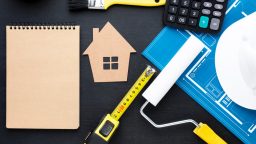A bathroom remodel can transform a tired, outdated space into a relaxing oasis or a functional, modern retreat. Whether you’re looking to upgrade fixtures, add more storage, or completely redesign the layout, bathroom remodeling is a project that can significantly improve both the aesthetics and functionality of one of the most frequently used rooms in your home. However, before diving in, there are several important things you need to know to ensure that your bathroom remodel goes smoothly and stays within budget. Here’s a comprehensive guide to help you plan and execute a successful bathroom remodel.
- Set a Realistic Budget
The first step in any remodeling project is to set a realistic budget. Bathroom remodels can range from simple updates to full-scale renovations, and understanding how much you’re willing to spend will guide your decisions throughout the process.
- Determine Your Priorities: Decide what’s most important for your remodel—whether it’s a luxury freestanding bathtub, high-end fixtures, or new storage solutions. Focus your budget on the areas that will give you the most value.
- Include a Contingency Fund: It’s wise to allocate an additional 10-20% of your budget for unexpected expenses. During demolition or construction, you might discover hidden issues, such as plumbing problems or outdated wiring, that need to be addressed.
- Cost Breakdown: A typical bathroom remodel can cost anywhere from a few thousand dollars for minor updates to tens of thousands for a complete overhaul. Be sure to consider the cost of materials, labor, permits (if required), and any specialty items like custom cabinets or designer fixtures.
- Choose the Right Style
The style of your bathroom should complement the overall aesthetic of your home, but it also needs to suit your practical needs. Whether you want a spa-like sanctuary or a functional family bathroom, the style of your remodel will influence design decisions like color schemes, fixtures, and layout.
- Modern: Sleek lines, minimalistic features, and high-tech fixtures characterize a modern bathroom. Think clean whites, greys, and blacks, with materials like glass, chrome, and marble. Consider smart toilets, digital shower systems, and underfloor heating.
- Traditional: Classic and timeless, traditional bathrooms often feature elements like subway tiles, vintage-style fixtures, and soft, muted colors. A clawfoot bathtub and pedestal sink can add an elegant touch.
- Rustic: If you love natural materials, a rustic bathroom remodel might be the way to go. Use wood, stone, and earthy tones to create a cozy, nature-inspired space. A wooden vanity, stone tiles, and exposed beams can give your bathroom a warm, cabin-like feel.
- Transitional: A transitional bathroom combines the best of both worlds, blending traditional and contemporary elements. Neutral tones, balanced proportions, and a mix of modern and classic fixtures make this style versatile and functional.
- Consider Layout and Space Utilization
Bathrooms are often small, so making the most of the available space is key to creating a functional and comfortable environment. While a bathroom remodel might give you the chance to rearrange the layout, some aspects of the space may be limited by plumbing and electrical placement.
- Shower vs. Bathtub: One of the first decisions you’ll need to make is whether to keep or replace the bathtub. If you’re renovating a small bathroom, replacing the tub with a larger shower might open up the space and improve functionality. On the other hand, a bathtub can be an important feature in a master bath or family bathroom.
- Storage Solutions: Many bathrooms suffer from a lack of storage. Consider adding built-in shelving, recessed medicine cabinets, or floating vanities that offer both storage and a sense of openness. Vertical storage options can help you make use of wall space and keep your bathroom clutter-free.
- Maximize Floor Space: In small bathrooms, use light colors, mirrors, and open shelving to create the illusion of space. Avoid bulky furniture, and opt for smaller, more streamlined fixtures to help the room feel larger.
- Focus on Quality Fixtures and Materials
The quality of the fixtures and materials you choose will have a significant impact on both the aesthetics and longevity of your bathroom remodel. Choose durable, water-resistant materials that can withstand the wear and tear of daily use.
- Flooring: Choose moisture-resistant flooring options like porcelain or ceramic tile, vinyl, or natural stone. These materials are durable and easy to clean, making them ideal for high-moisture areas like bathrooms.
- Countertops: For countertops, materials like granite, quartz, and marble offer durability and a high-end look. If you’re working with a smaller budget, laminate or concrete are affordable alternatives that still provide an attractive finish.
- Cabinets and Vanities: Custom or semi-custom cabinetry can enhance the style of your bathroom while providing essential storage. Choose moisture-resistant materials like solid wood or MDF (Medium Density Fiberboard) with a high-quality finish to prevent warping from humidity.
- Plumbing and Electrical Considerations
Bathroom remodels often require plumbing and electrical work, especially if you’re moving fixtures or installing new features like a heated floor or lighting system. It’s important to hire licensed professionals to ensure the work is done correctly and safely.
- Plumbing Changes: If you’re relocating the toilet, shower, or sink, you’ll need to update your plumbing lines, which can add significant costs to your project. Even minor changes like replacing old fixtures or adding a new water-efficient showerhead may require professional installation.
- Electrical Upgrades: Modern bathrooms often feature a range of electrical features, such as exhaust fans, heated towel racks, and ambient lighting. You may need to upgrade the electrical wiring or add new outlets to accommodate these features. For safety reasons, always hire a licensed electrician for these tasks.
- Ventilation: Proper ventilation is essential in a bathroom to prevent moisture buildup and mold growth. If your bathroom lacks a fan, consider adding one as part of the remodel to improve airflow and reduce humidity.
- Lighting Design
Lighting can completely change the look and feel of your bathroom. Consider layering different types of lighting to create a well-lit, inviting space. Proper lighting can also enhance the functionality of the bathroom, especially for tasks like shaving or applying makeup.
- Ambient Lighting: Start with ambient lighting, such as ceiling-mounted fixtures or recessed lighting, to provide general illumination. Opt for dimmable lights to adjust the brightness based on your needs.
- Task Lighting: Install task lighting around the mirror, such as sconces or vanity lights, to ensure adequate lighting for grooming tasks. Ideally, place lights on either side of the mirror to eliminate shadows.
- Accent Lighting: Consider adding accent lighting to highlight certain features, such as artwork or decorative tiles. LED strip lights under cabinets or along shelves can add a modern touch while creating a soothing atmosphere.
- Plan for Sustainability and Efficiency
Incorporating eco-friendly and energy-efficient features into your bathroom remodel can reduce your utility bills and lessen your environmental impact. Sustainable options are often just as stylish and functional as their traditional counterparts, making them a great choice for any remodel.
- Water-Efficient Fixtures: Install low-flow faucets, showerheads, and toilets to reduce water consumption without sacrificing performance. Many modern fixtures are designed to be both efficient and high-performing.
- LED Lighting: LED bulbs are energy-efficient, long-lasting, and ideal for use in bathrooms. They provide bright, clear lighting and are available in a wide range of styles to suit your decor.
- Energy-Efficient Heating: If you’re adding heated floors or towel racks, consider energy-efficient models that help maintain warmth without excessive energy use.
- Know When to DIY vs. Hire a Pro
While some aspects of a bathroom remodel—like painting walls, installing new accessories, or updating decor—can be tackled as DIY projects, more complex tasks like plumbing, electrical work, and tiling are best left to professionals. Attempting DIY on projects that require specialized knowledge could lead to costly mistakes or safety issues.
- DIY Projects: Painting walls, replacing cabinet hardware, installing new mirrors, and adding accessories like towels and artwork are perfect for DIY. You can save money and customize the space without professional help.
- Professional Help: For plumbing, electrical work, or structural changes, hiring licensed professionals is crucial. They have the expertise to handle these tasks safely and efficiently, ensuring your bathroom remodel meets all necessary codes and standards.
- Create a Timeline
A bathroom remodel, depending on the scope of the project, can take anywhere from a few days to several weeks. It’s essential to create a realistic timeline that accounts for demolition, material delivery, installation, and any unexpected delays.
- Planning Phases: Break your remodel down into phases, including demolition, construction, and finishing touches. Factor in time for ordering materials and scheduling contractors. It’s also helpful to plan for any downtime, such as waiting for custom fixtures to arrive.
- Contingency Time: Include some buffer time for unforeseen issues, such as plumbing problems or delays in material shipments. A bathroom remodel can sometimes take longer than expected, so having some flexibility will keep you from feeling stressed.
Conclusion
Bathroom remodeling is an exciting opportunity to enhance both the style and functionality of one of the most important rooms in your home. However, it’s important to carefully plan your remodel by setting a realistic budget, choosing the right materials, and knowing when to hire professionals. Whether you’re looking to refresh an outdated space or completely overhaul your bathroom, following these key considerations will help ensure a successful and stress-free renovation. By keeping these tips in mind, you can create a beautiful, functional bathroom that suits your needs and adds value to your home.





